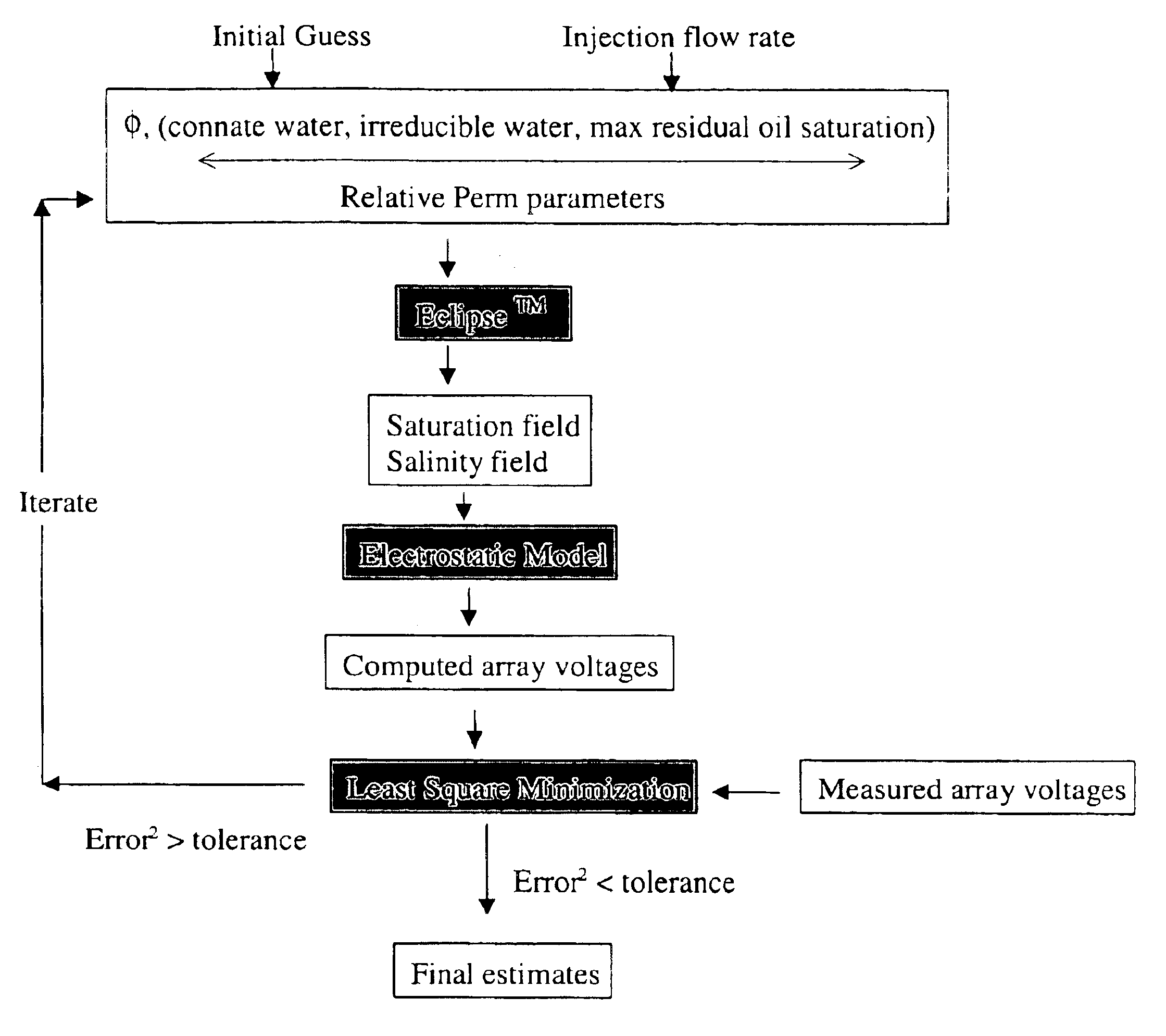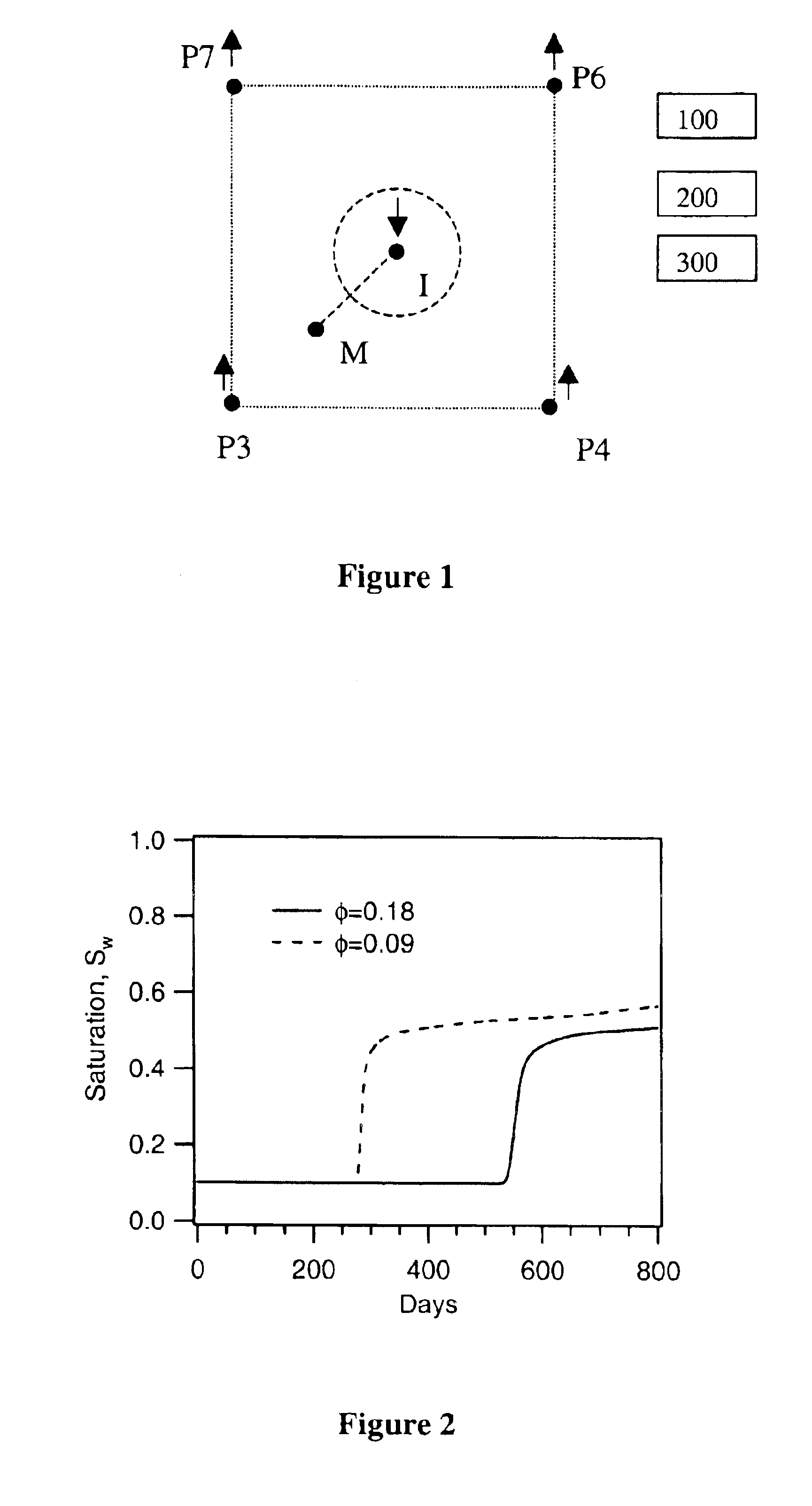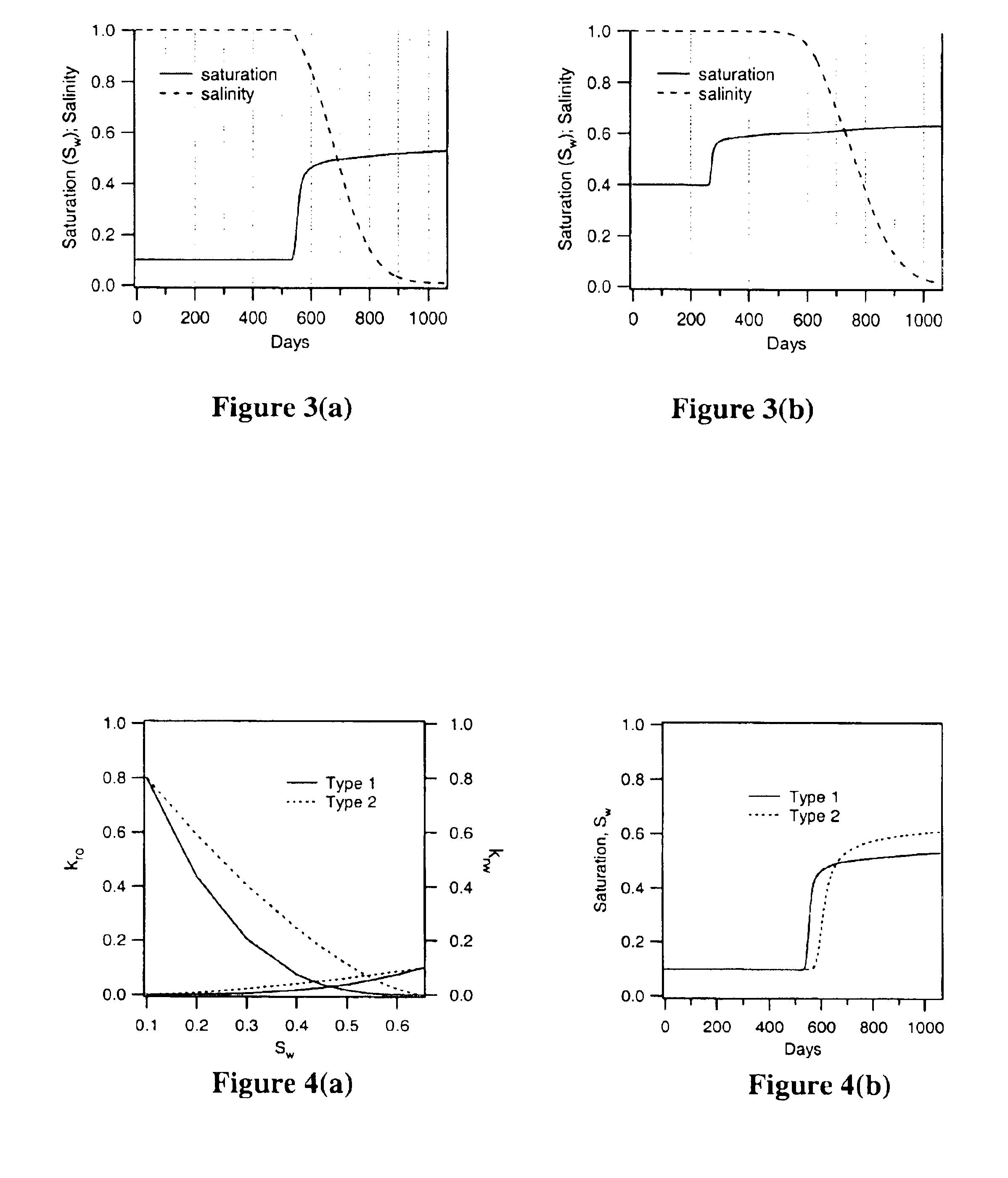Estimating formation properties in inter-well regions by monitoring saturation and salinity front arrivals
a technology of saturation and salinity fronts and formation properties, applied in the field of determining effective formation properties in the interwell region, can solve the problems of erroneous predictions of reservoir performance, salinity and saturation fronts, and limited usefulness in the inter-well region, and achieve the effect of more robust appraisal and detailed and improved characterization
- Summary
- Abstract
- Description
- Claims
- Application Information
AI Technical Summary
Benefits of technology
Problems solved by technology
Method used
Image
Examples
Embodiment Construction
[0025]FIG. 1 diagrams a typical five spot flooding pattern with a 15 foot thick pay zone and a permeability of about 70 mD. This configuration is used to explain the present invention and is intended to be non-limiting. One skilled in the art would recognize that additional configurations may be suitably employed.
[0026]As shown in the non-limiting model configuration of FIG. 1, a monitoring well with a permanently installed resistivity array may be drilled between an injector well (I) and a producer wells (P3, P4, P6 and P7). By way of example, the monitoring well (M) is shown halfway between I and P3; the actual number, type and location of the origination well (i.e. injector) and the monitoring locations may differ depending on the reservoir characteristics. The monitoring location may be an observation well, an appraisal well, a producing well or an exploratory well (or any combination of these wells). Well logs and core analysis at these two wells can give information about the ...
PUM
 Login to View More
Login to View More Abstract
Description
Claims
Application Information
 Login to View More
Login to View More - R&D
- Intellectual Property
- Life Sciences
- Materials
- Tech Scout
- Unparalleled Data Quality
- Higher Quality Content
- 60% Fewer Hallucinations
Browse by: Latest US Patents, China's latest patents, Technical Efficacy Thesaurus, Application Domain, Technology Topic, Popular Technical Reports.
© 2025 PatSnap. All rights reserved.Legal|Privacy policy|Modern Slavery Act Transparency Statement|Sitemap|About US| Contact US: help@patsnap.com



